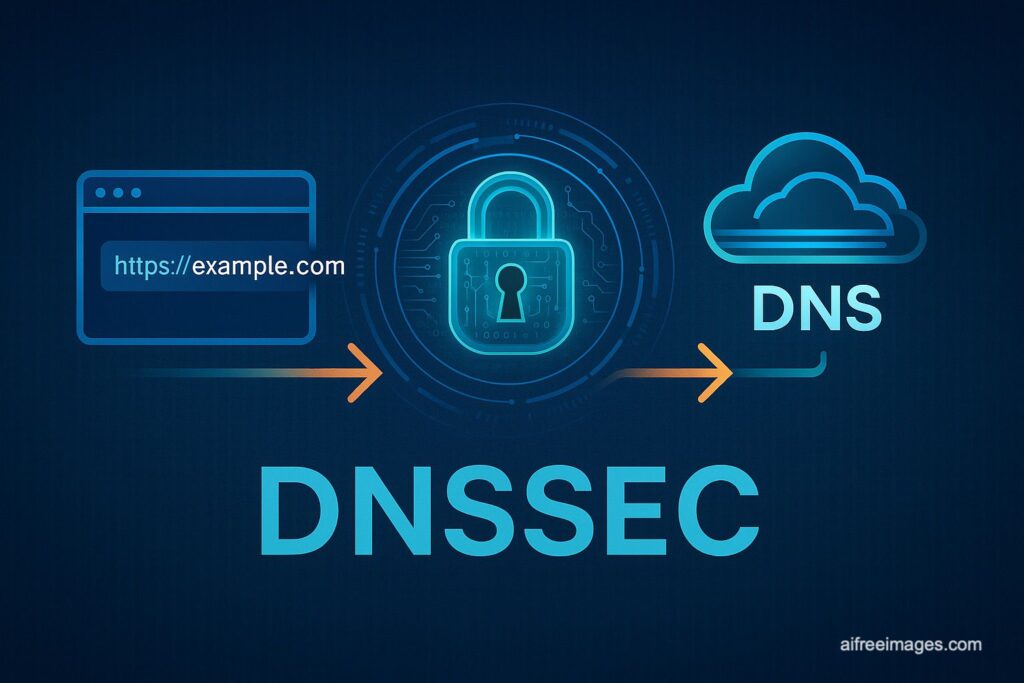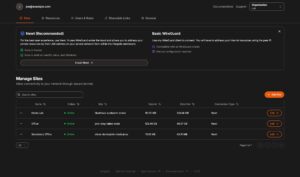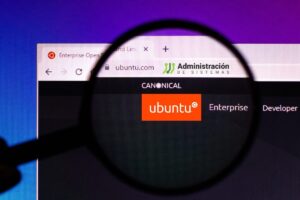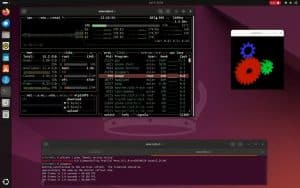The Domain Name System Security Extensions (DNSSEC) represent a foundational upgrade to Internet security. This protocol introduces cryptographic signatures to DNS records to safeguard against malicious attacks that may redirect users to fraudulent websites or compromise the integrity of transmitted data.
The Fundamental Weakness of Traditional DNS
The original DNS protocol was created in an era when security was not a primary concern. As such, DNS lacked built-in protection, leaving it susceptible to a range of threats. Without DNSSEC, users are vulnerable to:
- DNS Cache Poisoning: Attackers insert forged records into DNS caches.
- Response Spoofing: DNS queries can be intercepted and answered with malicious data.
- Man-in-the-Middle Attacks: Data may be altered during transmission without detection.
How DNSSEC Works: The Security Architecture
Cryptographic Signatures and Validation
DNSSEC enhances traditional DNS records by adding digital signatures. These signatures, stored alongside standard record types such as A, AAAA, and MX, allow resolvers to validate that the records originate from the authoritative name server and haven’t been tampered with during transit.
DNSSEC Record Types
Several new record types are introduced by DNSSEC to support its secure operation:
- RRSIG (Resource Record Signature): Contains the cryptographic signature for a record set (RRSet). Each signed RRSet has a corresponding RRSIG record to verify authenticity.
- DNSKEY: Holds the public keys used to verify RRSIG signatures. These are essential for establishing trust chains.
- DS (Delegation Signer): Stores a cryptographic hash of a child zone’s DNSKEY record, linking parent and child zones in the DNS hierarchy.
- NSEC/NSEC3: Provide authenticated denial of existence, preventing false NXDOMAIN responses used in denial-of-service and enumeration attacks.
DNSSEC Key Infrastructure
Zone Signing Keys (ZSK)
ZSKs are used to sign the bulk of a zone’s records. Key attributes:
- Rotated more frequently for enhanced security.
- Sign operational data like A, AAAA, and MX records.
- Lightweight in terms of computational load.
- Enable more agile zone updates.
Key Signing Keys (KSK)
KSKs sign only the ZSKs, adding an extra trust layer:
- Rotated infrequently due to their high administrative impact.
- Do not sign operational data directly.
- Create a hierarchical trust model.
- Simplify key management by separating signing duties.
Trust Chains and DS Records
DNSSEC’s strength lies in its “chain of trust.” DS records in the parent zone point to the KSK in the child zone, forming a cryptographically verifiable path up to the DNS root, where trust anchors initiate the validation process.
DNSSEC Operational Modes
Offline Signing for Static Zones
Provides maximum security by isolating private keys:
- Ideal for infrequently changing zones.
- Preferred by high-security organizations.
- Suitable where uptime is not mission-critical.
Pros: Near-immunity to remote attacks
Cons: Slower update process, increased complexity
Centralized Online Signing
Balances security with operational flexibility:
- Private keys are stored on secure, network-connected systems.
- Enables faster zone updates.
- Requires stringent access controls and monitoring.
On-the-Fly Signing
Maximizes agility and personalization:
- Authoritative servers sign records dynamically.
- Supports real-time responses and dynamic zones.
- Increases the attack surface due to key exposure.
Implementation Challenges and Considerations
DDoS Amplification Risks
DNSSEC responses are significantly larger due to cryptographic data:
- Increased response size: Larger DNS packets can be exploited.
- Amplification factor: Small queries generate disproportionately large responses.
- UDP reliance: UDP’s lack of session control makes spoofing easier.
Operational Complexity
Deploying DNSSEC requires careful planning:
- Key lifecycle management: Generation, rotation, revocation.
- Time synchronization: Signatures have strict validity periods.
- Continuous monitoring: Essential for validation and troubleshooting.
Root Signing Ceremony: A Global Security Ritual
A fascinating element of DNSSEC is the Root Signing Ceremony—a formal, highly secure procedure safeguarding the master key of the DNSSEC trust infrastructure.
Roles and Responsibilities
The ceremony involves:
- Ceremony administrators: Lead the process.
- Crypto officers: International volunteers who hold key fragments.
- Security controllers: Manage physical access to critical systems.
- Witnesses: Observe and validate the entire procedure.
Physical Security Infrastructure
The ceremony environment incorporates multiple security layers:
- Separate safes for credentials and hardware.
- Multi-factor authentication required for access.
- Air-gapped hardware to prevent remote compromise.
- Comprehensive documentation and live streaming for transparency.
Practical Implementation and Recommendations
Needs Assessment
Before deploying DNSSEC, consider:
- Domain criticality: What are the implications of DNS compromise?
- Available resources: Is qualified technical staff available?
- Infrastructure readiness: Are current systems DNSSEC-compatible?
- Risk tolerance: Can complexity be justified by potential benefits?
Phased Deployment Strategy
A staged rollout helps manage risk:
- Preparation: Audit DNS infrastructure.
- Pilot: Test on a subdomain.
- Validation: Thorough functional testing.
- Rollout: Gradual deployment on production zones.
- Monitoring: Continuous validation and tuning.
Operational Best Practices
- Automation: Use tools for key rollover.
- Redundancy: Maintain multiple signing systems.
- Documentation: Develop response plans and detailed procedures.
- Training: Ensure technical staff are DNSSEC-competent.
The Future of DNSSEC
Technological Advancements
DNSSEC is evolving to meet modern needs:
- Post-quantum cryptography: Preparing for quantum threats.
- Performance optimization: Reducing DNSSEC overhead.
- IoT integration: Making DNSSEC viable for constrained devices.
Global Adoption
Uptake continues to rise:
- Top-level domains: Many ccTLDs and gTLDs are signed.
- Critical infrastructure sectors: Governments, finance, and health lead the charge.
- Awareness initiatives: Education programs highlight DNSSEC’s importance.
Conclusion: Security as a Pillar of Internet Integrity
DNSSEC is more than a technical enhancement—it represents a paradigm shift in the security model of the Internet. In an era where nearly every digital service relies on DNS, ensuring its integrity is paramount.
Implementing DNSSEC is not optional for organizations serious about digital security. Although it introduces complexity, the trade-off in enhanced trust and protection is overwhelmingly favorable.
Organizations yet to adopt DNSSEC should prioritize its evaluation and deployment. The question is no longer if to implement DNSSEC, but when and how. The stability and trustworthiness of tomorrow’s Internet depend on the security measures put in place today.











